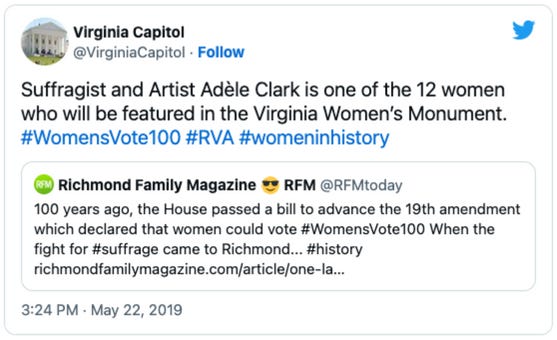From Juneteenth to July 4th—Forming a More Perfect Union
“In order to form a more perfect union”—these immortal words in the Constitution’s preamble have inspired Americans for centuries. The blessings of liberty were not enjoyed by all Americans at our nation’s birth, but from the beginning, the Constitution recognized humanity’s inherent dignity which overcomes contemporary politics. Throughout history, as men and women came to know this document, they were empowered to demand the rights it secured.
From abolition to women’s suffrage, the journey to form a more perfect union has led through choppy waters. But advocates for freedom like Elizabeth Freeman, Adèle Clark, and Biddy Mason refused to give up until they achieved the rights enshrined in the Constitution—the “glorious liberty document,” as Frederick Douglass praised it. The memory of their courageous work must push us to educate future generations through honest civic resources, monuments, and other educational projects so that their stories can continue to serve as beacons of inspiration in the pages of our history books.
Are you familiar with these women and their extraordinary pursuit of a more perfect union? Check out their stories below, and let us know what other names we should add to the list.
For Elizabeth Freeman, words mattered. She couldn’t read or write because she grew up as a slave, but when she overheard the reading of the Massachusetts state constitution—“all men are born free and equal, and have certain natural, essential, and unalienable rights…”—she didn’t think of her limits. She was emboldened by these promises of rights, identified people in her community who were willing to help, filed, and won a “freedom suit.” Her actions implicitly ended slavery in the state.
The daughter of Freeman’s employer later in life jotted down a few powerful notes about what motivated Freeman.
How can you use your gifts and talents to engage your local community in conversations about important issues? Adèle Clark was an artist and educator by training, but she also saw a need for women and children to know more about their rights and duties as American citizens. Early on in her twenties, Clark began taking creative action. She painted in the streets of Richmond, and when passersby would stop to talk to her about her artwork, she turned the conversation to women’s suffrage or ending child labor and segregation. Learn more about her and other suffragettes through this short video.
Clark is one of many honored at the Virginia Women’s Monument in Richmond for shaping local, Commonwealth, and national culture. While you’ve likely seen a lot of debate online about monuments, it is important to remember that they can serve as a helpful way to tell a local community’s story and preserve its history for future generations. What monuments do that well in your local community?
Biddy Mason’s contribution toward a more perfect union was so inspirational that CSS senior fellow and former chairman of the National Endowment for the Humanities Jon Parrish Peede awarded over $240,000 to fund The Long Road to Freedom project, honoring her life and telling her story. Grants like these are one of many ways our institutions can encourage the next generation to learn from history.
But are we teaching students to ask the best questions when we come across heroes like Mason? Are we limiting her story if we only focus on what was done to Mason rather than how she obtained and lived out her freedom? In an article he wrote for Juneteenth, Robert L. Woodson Sr. challenges us to discuss our shared history completely and honestly so we can understand our past and build our future together.
Achievements toward a more perfect union have happened through an imperfect process spanning more than two centuries, and the lives of people like Freeman, Clark, and Mason are lessons for us. Are we telling their stories honestly in our classrooms? This piece by William J. Bennett had our team discussing…
Bennett writes: “If we tell the full story of the American past, it will help write a bright story of the American future.” How are we doing in this endeavor? How can we do better?









